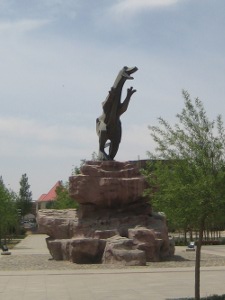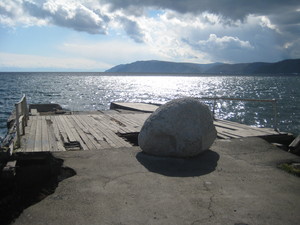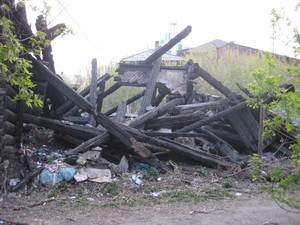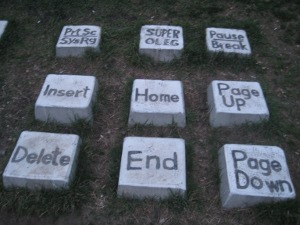Entries tagged as asia
almaty alps asia2013 berlin border bus china coach erlian kazakhstan khorgas koktobe moscow mountains petropavl shymbulak snow train transsiberian travel warsaw yining amusementpark beijing cinderella copyright disney disneyland fake freesoftware shijingshan stepmania trip2011 arcade architecture astana baiterek belarus boluo boten capsulehotel casino coffee computerhistory copycat dunhuang ghosttown guangzhou hallstatt huizhou journey khanshatyry kualalumpur laos luoyang magistral malaysia migrationcard migrationpolice museum northwestchina poland pyramid rainforest retro retrogames russia tankodrom terracottawarriors thailand travelling urumqi visa windenergy xian xinjiang aviation climatechange ecology flying seat61 azerbaijan caspian ferry mongolia baikal listwjanka portbaikal ccp hostel hotel tiananmen 129a 1mai 23c3 24c3 27c3 a100 abgeordnetenhaus akongress akw allianz anarchiekongress antiatom atheismus atomkraft autobahn bahnhof belene bild brandenburg bundestagunited buskampagne bz ccc cellular compiz creativecommons dataretention datenschutz demonstration dose elephantsdream energie energietisch energiewende freeculture freedomnotfear freifunk freiheitstattangst frequencies frequency fsfe gott gsm informationsfreiheit itu jugendumweltbewegung jukss kamera kameraüberwachung kernkraft klima klimaschutz klimawandel kohle kohlekraft kongress königswusterhausen kyoto lessig linux mcplanet mobilephones moleculeman musik ökologie ökostrom openbsc openbts openstreetmap osm osmocombb papst peterschaar piratenpartei polizeigewalt preise privacy privatsphäre ratzinger re-publica re-publica09 religion rp09 rwe science security sony springer strom stromnetz tagebaue taz theory thermen topberlin treptow tuberlin überwachung ubuntu umwelt umweltschutz unserwasser urgewald verkehr videoüberwachung volksbegehren vorratsdatenspeicherung wahl wasser wg wiki windowsxp wiretapping wirklimaretter wos wos4 youtube zensur zimmer childrensday erenhot hohhot ulaanbaatar zamyn-uud metro publictransport tram transport ulan-ude censorship epr freedomofspeech gentoo greatfirewall hongkong nuclear politics sortirdunucleaire babelfish chinese chinghai english freizeitpark googletranslate haikou hainan journalismus language mandarin miradormansion presse pressefreiheit rain russian sanya suprememaster tagesschau translation typhoon universaltranslator vegan vegetarian weather yanoda cement climate decarbonization industry steel 68 aacs abmahnung alecempire aliens art banksy barrierefrei berneconvention bittorrent bitv blueray brigittezypries buch bücher bundestag cedric chaosradio corruptibles cpdl culturalflatrate culture di drm easterhegg ebook epetition eu eucopyrightdirective evrimsen fanart fanfiction filesharing film funkerspuk gema gemavermutung geodaten graffiti gutenberg gvl hacker hddvd hiddenfrontier html ifpi illegalart iromance jankroemer justizministerium kinderlieder kopierschutz kriegderwelten kts kultur laterne laternenumzug licenses lug markenrecht metis movies mpaa musikindustrie musikpiraten mysmartgrid negativland netradio nocopy patent patente penguinbooks petition piratbyrån piratebay politik publicdomain radio radiopolitik raubdruck raubkopie remix rsa rsaoaep rsapss sanktmartin savenetradio sciencefiction spiritlevel startrek thepiratebay tomcruise trips tuxmas tuxmas07 usa usbstick verwertungsgesellschaft vgmusikeditionen vgwort vlc w3c warez webradio wipo wizo dam irkutsk waterpower altparty antinuclear cablemodem d-link demoscene efficiency eletricity environment finland helsinki kabeldeutschland loviisa o2 router stromverbrauch 3d 3ddrucker adobe ati backnang base64 bash beryl bios blob bonn bufferoverflow camera canon chdk chemnitz chromium cinelerra clt code codecs compizfusion composite compression console csrf css cve ddwrt debian desktop developingworld digitalcamera driver dvd eltorito evince exe ffmpeg firefox firmware france freewvs freiegesellschaft froscon froscon2007 fsf gaia games gargoyle ghost gimp glibc gnome google googleearth graphics grub hardware heartbleed homebrew ibm ico icons icoutils iso ixus karlsruhe kde kpdf laptop lenovo license lpi lpic lspci lsusb memdisk messe microsoft movie nancy nessus nouveau nvidia okular olpc openexpo opengl opensourceexpo openssl openvas pciids pdf phoronix php poppler rapidprototyping rar realmedia realvideo redhat reprap reverseengineering rmll rv30 rv40 s9y script serendipity sfd shellshock siegburg simcity society softwarefreedomday sqlinjection sumatrapdf sunras syslinux talk thesource theunarchiver thinkpad unar usbids video videoediting vulnerability web wii wiibrew windows windowsrefund wrestool xorg xss diplomathesis simple thesis upgoerfive words lenin ulanude yekaterinburg crookedforest forest gryfino nature places mappus police policeviolence protest rech s21 schuster stuttgart stuttgart21 traffic qwerty ticket transsib blackhat defcon lasvegas retrogaming internetzensur netzneutralität zensursula
 Hainan (海南) Island is the southmost point of China and has a tropical climate. It has some tourist-oriented cities with beaches and many coconut trees. We stayed some days in Haikou (海口) and Sanya (三亚).
Hainan (海南) Island is the southmost point of China and has a tropical climate. It has some tourist-oriented cities with beaches and many coconut trees. We stayed some days in Haikou (海口) and Sanya (三亚). As I already wrote, we didn't manage to take the ferry and got to Haikou (and later to Sanya) by train - however, there is no bridge, so the train is put on a ship. Sadly, it wasn't possible to leave the train during that time. On our way back, it was somewhat difficult to get a ticket, as we left on the day after the typhoon - and all the people who planned to leave the day before either on the ferry or on a train also tried to get tickets so we had to queue for four hours.
As I already wrote, we didn't manage to take the ferry and got to Haikou (and later to Sanya) by train - however, there is no bridge, so the train is put on a ship. Sadly, it wasn't possible to leave the train during that time. On our way back, it was somewhat difficult to get a ticket, as we left on the day after the typhoon - and all the people who planned to leave the day before either on the ferry or on a train also tried to get tickets so we had to queue for four hours. While going on to the south of China, we had a short stop in Guangzhou (广州). It is the third largest city in the country and the center of the cantonese part of China. At this time of the year, the climate in Guangzhou is very extreme, which we suddenly experienced when we left the train: Very hot and very humid.
While going on to the south of China, we had a short stop in Guangzhou (广州). It is the third largest city in the country and the center of the cantonese part of China. At this time of the year, the climate in Guangzhou is very extreme, which we suddenly experienced when we left the train: Very hot and very humid. Due to current events, I'm abandoning the chronological order of my trip reports. You have probably read about the floods currently in China.
Due to current events, I'm abandoning the chronological order of my trip reports. You have probably read about the floods currently in China. I promised before that I'll present a cheaper way than the international train to get from Ulaanbaatar on to China. But after doing it and all its obstacles, I'm not sure if I'd suggest it any more.
I promised before that I'll present a cheaper way than the international train to get from Ulaanbaatar on to China. But after doing it and all its obstacles, I'm not sure if I'd suggest it any more. We wanted to go on from Zamyn-Üüd to Erenhot and were confronted with the next unplesant surprise: It was the first of June - international childrens day - and that's a national holiday in Mongolia and the border check is closed. So we were stuck in Zamyn-Üüd for a day longer.
We wanted to go on from Zamyn-Üüd to Erenhot and were confronted with the next unplesant surprise: It was the first of June - international childrens day - and that's a national holiday in Mongolia and the border check is closed. So we were stuck in Zamyn-Üüd for a day longer. Now with that mysterious bus - I read on several places in the Internet that there exists a bus line between Erenhot and Hohhot, however none of them had anything to say where this bus departs, where you can buy a ticket or where you can find any information at all. It also turned out that communication here was a much bigger problem than thought - I think we didn't meet a single english-speaking person at all. So we ended up using a train to Hohhot, which was also quite cheap and comfortable.
Now with that mysterious bus - I read on several places in the Internet that there exists a bus line between Erenhot and Hohhot, however none of them had anything to say where this bus departs, where you can buy a ticket or where you can find any information at all. It also turned out that communication here was a much bigger problem than thought - I think we didn't meet a single english-speaking person at all. So we ended up using a train to Hohhot, which was also quite cheap and comfortable. The next stop on our trip was Ulaanbaatar (Улаанбаатар), the capital of Mongolia. Mongolia is the most sparsely populated country in the world and about one third of the population lives in Ulaanbaatar. Large parts of the city consist of ger districts - a ger is a typical mongolian nomadic tent. In those districts, people live very dense either in gers or in very simple wood houses.
The next stop on our trip was Ulaanbaatar (Улаанбаатар), the capital of Mongolia. Mongolia is the most sparsely populated country in the world and about one third of the population lives in Ulaanbaatar. Large parts of the city consist of ger districts - a ger is a typical mongolian nomadic tent. In those districts, people live very dense either in gers or in very simple wood houses. We wanted to visit the Terelj national park near Ulaanbaatar, but that failed because the bus times we got from the Internet were probably wrong (there is no bus at 11:00, no matter what the Internet tells you). Instead, we made a tour to the mountains south of the capital, which was also quite nice and interesting nature.
We wanted to visit the Terelj national park near Ulaanbaatar, but that failed because the bus times we got from the Internet were probably wrong (there is no bus at 11:00, no matter what the Internet tells you). Instead, we made a tour to the mountains south of the capital, which was also quite nice and interesting nature. All russian cities we visited had a very well working public transport system. It consists of metros, trams, busses, trolleybusses and minibusses.
All russian cities we visited had a very well working public transport system. It consists of metros, trams, busses, trolleybusses and minibusses. Ulan-Ude (Улан-Удэ) was our last stop in Russia, afterwards we took the bus to Ulaanbaatar (Улаанбаатар), the capital of Mongolia.
Ulan-Ude (Улан-Удэ) was our last stop in Russia, afterwards we took the bus to Ulaanbaatar (Улаанбаатар), the capital of Mongolia. Right at the border, we already noticed that in Mongolia, english was much more common than in Russia. Unlike on the russian side, some of the mongolian border officers were able to speak english. After the border, we stopped at a restaurant for a while.
Right at the border, we already noticed that in Mongolia, english was much more common than in Russia. Unlike on the russian side, some of the mongolian border officers were able to speak english. After the border, we stopped at a restaurant for a while.
 After being in Irkutsk, we headed on to lake Baikal. Although we heared that it's worthwile to visit the nature reserves in the north of the lake, we decided against it, as all options to get there would've involved quite long bus trips.
After being in Irkutsk, we headed on to lake Baikal. Although we heared that it's worthwile to visit the nature reserves in the north of the lake, we decided against it, as all options to get there would've involved quite long bus trips. Listwjanka is connected with Port Baikal at the other side of the Angara with a ferry. Listwjanka is not very big, but it's spread several kilometers on the lake's shore. The ferry terminal was somewhat special. I wouldn't have noticed it as being in operation if I hadn't known exactly where it was. There was an old place to board the ferry where already some holes where in the ground and a big rock prevented any cars from getting on it. The ferry just boarded right beside that place. The timetable consisted of a piece of printed paper in plastic.
Listwjanka is connected with Port Baikal at the other side of the Angara with a ferry. Listwjanka is not very big, but it's spread several kilometers on the lake's shore. The ferry terminal was somewhat special. I wouldn't have noticed it as being in operation if I hadn't known exactly where it was. There was an old place to board the ferry where already some holes where in the ground and a big rock prevented any cars from getting on it. The ferry just boarded right beside that place. The timetable consisted of a piece of printed paper in plastic. Port Baikal is really small. It wasn't even possible to get a coffee there, it only has some small shops (where we got some very good baked sweets). It is the starting point of the circum baikal railway line. We had to stay several hours, because the ferry only goes a few times a day. Port Baikal gave us a feeling of seeing Russian live in a small village. Some cows were just walking on the "streets" (no paved roads here). I assume Port Baikal has no water supply, as many people were getting water from a pump near the train station.
Port Baikal is really small. It wasn't even possible to get a coffee there, it only has some small shops (where we got some very good baked sweets). It is the starting point of the circum baikal railway line. We had to stay several hours, because the ferry only goes a few times a day. Port Baikal gave us a feeling of seeing Russian live in a small village. Some cows were just walking on the "streets" (no paved roads here). I assume Port Baikal has no water supply, as many people were getting water from a pump near the train station. I'm still lagging behind a lot with blogging my trip. So I'll try to keep up a bit.
I'm still lagging behind a lot with blogging my trip. So I'll try to keep up a bit. I took the opportunity in Irkutsk to visit the
I took the opportunity in Irkutsk to visit the  Large parts of our trip to Asia is on the famous
Large parts of our trip to Asia is on the famous  Every carriage has usually two train conductors. Something common on russian trains is that you can always get hot water to make tea or packet soup. I read in advance that there are a lot of food facilities on the stations, but this turned out to be much less of an option than thought. There are usually only small kiosks which all have more or less the same offerings.
Every carriage has usually two train conductors. Something common on russian trains is that you can always get hot water to make tea or packet soup. I read in advance that there are a lot of food facilities on the stations, but this turned out to be much less of an option than thought. There are usually only small kiosks which all have more or less the same offerings. I am a bit behind with blogging my trip - not enough time, and if there's enough time, theres often not enough electricity or internet.
I am a bit behind with blogging my trip - not enough time, and if there's enough time, theres often not enough electricity or internet. Beside the ticket buying, which took us half a day and limited the time we had to see the city, some interesting places worth mentioning:
Beside the ticket buying, which took us half a day and limited the time we had to see the city, some interesting places worth mentioning: After a 30 hour train trip, we arrived at Moscow Belorussky Terminal (Москва́ Белорусский вокзал). We stayed with some very nice
After a 30 hour train trip, we arrived at Moscow Belorussky Terminal (Москва́ Белорусский вокзал). We stayed with some very nice  I read a lot that it's difficult for foreigners without russian language skills to get tickets at the station's offices. The offers you'll get if you book through travel agencies in Germany are usually totally overpriced and it's often impossible to book the 3rd class at all. We booked our tickets through
I read a lot that it's difficult for foreigners without russian language skills to get tickets at the station's offices. The offers you'll get if you book through travel agencies in Germany are usually totally overpriced and it's often impossible to book the 3rd class at all. We booked our tickets through 